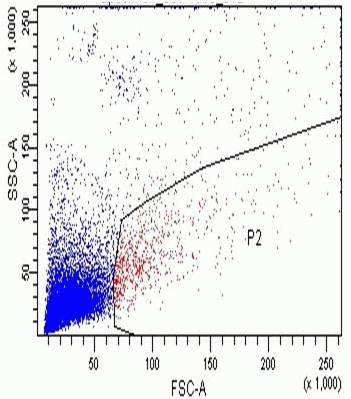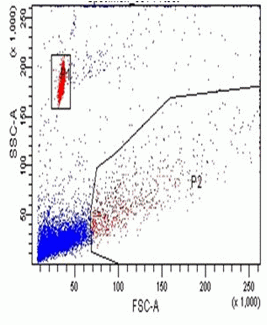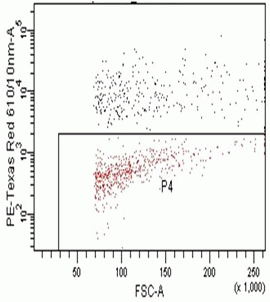Insect haemolymph cells can be isolated from Plodia interpunctella larvae via a small bore glass capillary tube. Normally 2-3 ml can be isolated in this way. This primary isolate can be transferred to 200 ml PBS in a 5ml Falcon tube.
Absolute Cell Counting
The haemolymph of Plodia interpunctella larvae usually contain a total of 3,00-6,000 cells and counting these manually on a Haemocytometer is time consuming and not very accurate as counts estimated can be as low as zero. The use of flow cytometry to calculate the absolute count by adding latex beads of a known concentration to a 1:100 dilution of haemolymph cells allows counts to be determined in 30 seconds when counting 2,500 beads (20 ml volume) from a solution of 180 ml PBS. Normally the average rate of cell counting manually is over 5 mins, so large numbers of haemolymph cells can be counted in a relatively short time by flow cytometry.
Viability
Insect haemophyl cells viability can be assessed by propidium iodide (PI)



